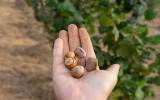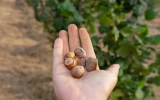How Long Do Hazelnut Trees Take to Produce?
Did you know that hazelnut trees are quite the patient producers? Rapid development of nuts occurs after the female flowers are fertilized—typically within four to six weeks, with ninety percent of the growth occurring within this period. Patience is key, but your efforts will be rewarded with delicious hazelnuts in due time.
Hazelnut trees typically begin producing nuts 3 to 5 years after planting. They reach full production capacity in about 7 to 10 years. Earlier fruiting varieties include 'Barcelona', 'Clark', 'Lewis', 'McDaniel', and 'Santiam'.
Selecting whether to grow your hazelnut as a bush or a single-stemmed tree can impact how the plant grows and when the nuts will mature. If you start with seeds, it might take up to eight years for the first nuts to appear.
Summary
- If starting from seed, it can take up to 8 years for the first nuts to appear.
- The first three years focus on establishing strong roots and branches. Water and care for the young tree.
- Nut production starts small around year 4-5, then increases to full productivity at 6–7 years.
- Factors like variety, climate, soil, pollination, and tree care can impact hazelnut production levels.
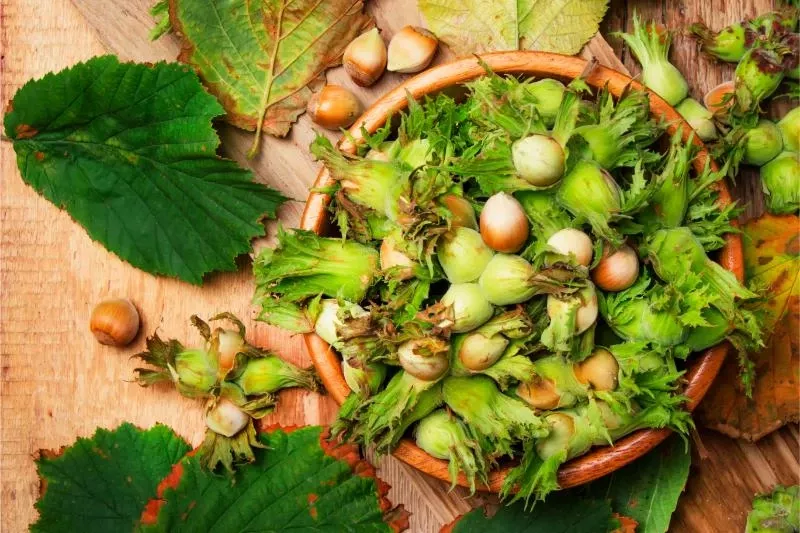
On this page:
Hazelnut Trees Take 3 to 4 Years to Fruit
| Variety of Hazelnut Trees | Time to First Fruit | Time to Full Production |
|---|---|---|
| Barcelona | 3–4 years | 6–7 years |
| Clark | 3–4 years | 6–7 years |
| Lewis | 3–4 years | 6–7 years |
| McDaniel | 3–4 years | 6–7 years |
| Santiam | 3–4 years | 6–7 years |
| Butler | 4–5 years | 7–8 years |
| Ennis | 4–5 years | 7–8 years |
| Marshall | 4–5 years | 7–8 years |
| Merveille de Bollwiller | 4–5 years | 7–8 years |
| Willamette | 4–5 years | 7–8 years |
Typically, if you plant a young tree, it will take three to five years for it to reach maturity and begin producing nuts. This timeline is for trees that have been grafted or purchased from a nursery, as they have a head start on growth.
However, if you're starting your hazelnut tree from seed, expect a longer wait. From the time of planting the seed, it can take up to eight to nine years for the tree to bear fruit. The wait is longer because the seedling must grow from scratch without any prior development.
The first few years are crucial for establishing a strong root system and healthy branches. To aid in this process, ensure your tree has well-drained soil and plenty of sunlight. Water regularly, but be careful not to overwater, as hazelnut trees don't like waterlogged roots.
Your hazelnut trees will need another tree nearby to cross-pollinate and produce nuts successfully. Make sure you plant more than one tree to ensure they can pollinate each other. As they mature, the size and quantity of the hazelnuts you harvest will typically increase.
Each year, as spring arrives, you'll notice the male catkins and the tiny red female flowers, which signal the start of the pollination process. After successful pollination, nuts will develop over the summer months.
In late summer to early fall, mature hazelnuts will transition in color from green to a brownish hue. This color change indicates they are ready to be harvested. When they naturally fall from the tree, it's time to collect your nuts. Remember, harvesting typically occurs between September and October, so keep an eye out for nut drop during these months to seize your harvest.
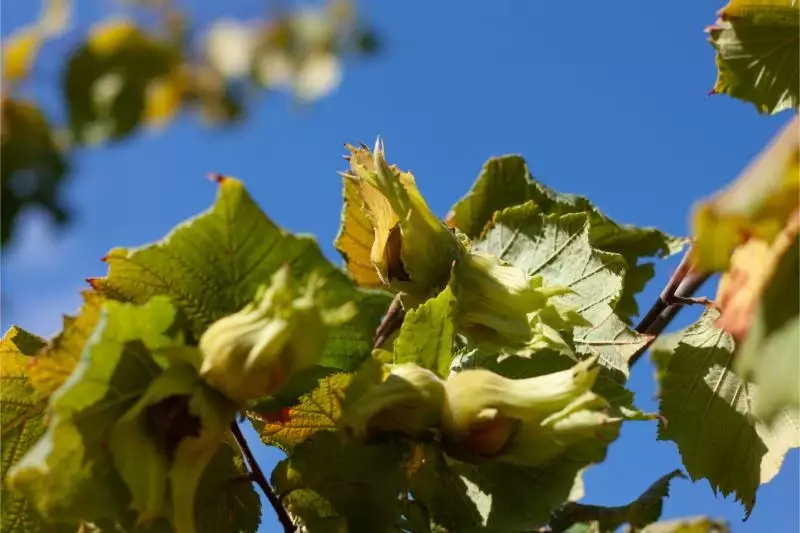
Growth Cycle of Hazelnut Trees
| Year | Hazelnut Trees' Growth Cycle |
|---|---|
| 1–3 | Establishing root system; unlikely to see any nuts |
| 4–5 | See the first signs of nut production |
| 6–7 | Reach full productivity |
Hazelnut trees, part of the genus Corylus, are known for their resilience and relatively fast growth. However, "fast" in the world of trees is a relative term. Here's what you can expect:
Establishment and growth
Year 1–3: After planting, hazelnut trees focus on establishing their root system and growing in size. During this period, you're unlikely to see any nuts. It's a time of waiting and watching as your tree builds the foundation for future harvests.
Initial nut production
Year 4–5: This is when the magic starts. Around the fourth or fifth year, you'll begin to see the first signs of nut production. These initial harvests might be small, but they mark the beginning of your tree's productive phase.
Full productivity
Year 6–7 onwards: Hazelnut trees typically reach full productivity after about 6 to 7 years. From this point on, you can expect robust annual harvests, provided the trees are well-maintained.
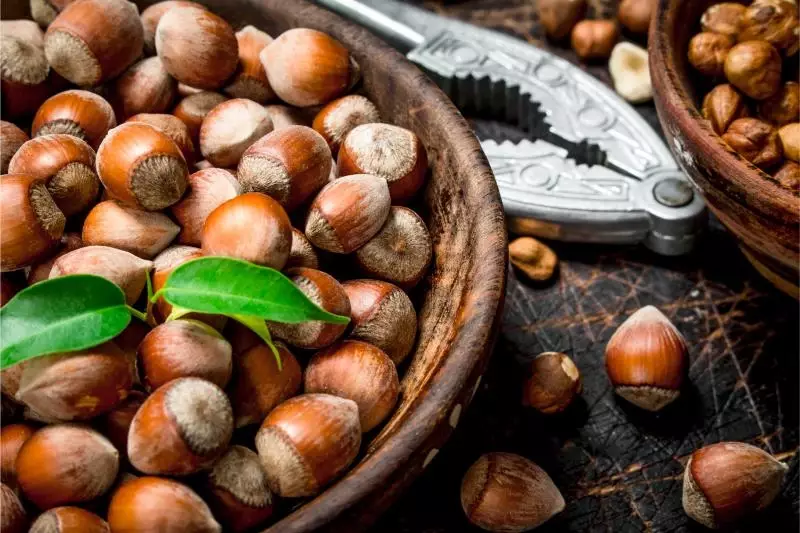
Want to know who are the largest producers of hazelnuts? Find out here.
Factors Affecting Hazelnut Tree Production
Variety
Different varieties of hazelnut trees have slightly different timelines and productivity levels. Earlier fruiting varieties include 'Barcelona', 'Clark', 'Lewis', 'McDaniel', 'Santiam'. Later fruiting varieties tend to be 'Butler', 'Ennis', 'Marshall', 'Merveille de Bollwiller', 'Willamette'.
Age of the tree
Your hazelnut tree won't produce fruit immediately. Typically, trees take about 3–4 years to bear fruit, or up to 8–9 years if grown from seed. It's a waiting game, but your patience will be rewarded with a bountiful harvest eventually.
Climate and soil
Hazelnut trees thrive in temperate climates with mild, wet winters and warm, dry summers. Extreme temperatures or conditions can delay or reduce nut production.
Hazelnuts prefer a specific range of soil pH and thrive in well-drained soil with mild acidity to neutral pH. Assessing your soil quality and making necessary amendments helps ensure tree health and nut production.
- Soil pH: Ideal pH is between 6.0 and 7.0.
- Drainage: Good drainage is crucial for preventing root diseases.
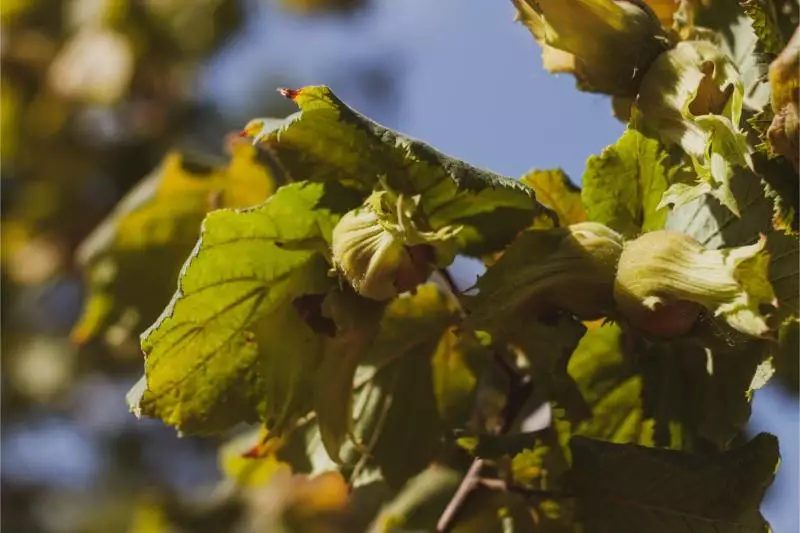
Which country produces the most hazelnuts? Here's the answer.
Pollination
For hazelnuts to form, their flowers must be cross-pollinated. Having more than one variety can increase your chances of successful pollination and, subsequently, a better yield. Bees are often the heroes here, transferring pollen between flowers.
- Multiple trees: Plant more than one tree for cross-pollination.
Tree care
Proper pruning, pest control, and fertilization go a long way in boosting your tree's productivity. Knowing how to care for your hazelnut trees can make the difference between a mediocre yield and an impressive one.
-
Regular watering, especially during dry periods, and yearly fertilization help maintain health and productivity.
-
Keep an eye out for signs of disease or pests. Early intervention can save your crop.
-
Hazelnuts are typically ready to harvest in late summer or early fall when the husks begin to crack. Harvesting promptly can prevent losses to wildlife or spoilage.


